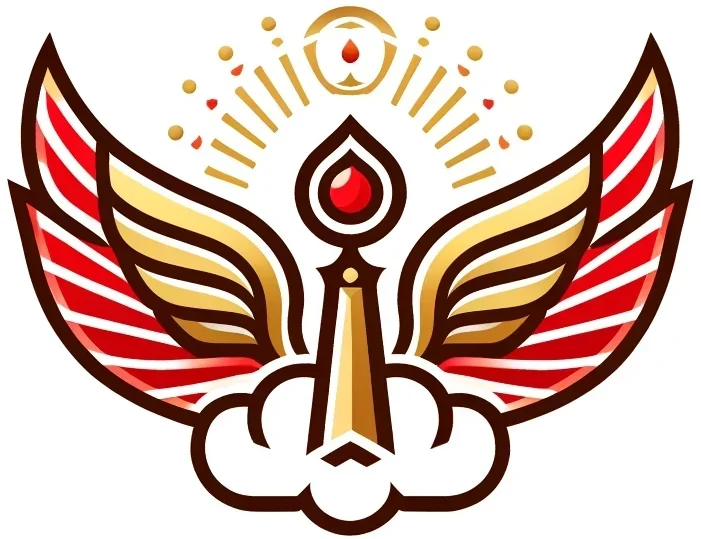The Journey Beyond
In both Zoroastrianism and Islam, the journey of the soul does not end with death—it begins anew. These faiths envision a moral universe where human choices echo beyond the grave, determining one’s eternal fate. What is striking, however, is how closely Islamic eschatology echoes earlier Zoroastrian doctrines—particularly the judgment of souls, the crossing of a cosmic bridge, and the division between paradise and hell. Through cultural exchange, conquest, and philosophical fusion, Zoroastrian afterlife beliefs deeply shaped Islamic visions of the end.
1. The Chinvat Bridge and the Sirat: Paths to Eternity
At the heart of Zoroastrian afterlife doctrine lies the Chinvat Bridge—the “Bridge of the Separator.” Upon death, every soul must cross this bridge. For the righteous, it widens and leads safely to the House of Song (paradise); for the wicked, it narrows to a blade, and they fall into the House of Lies (hell).
Islam presents a nearly identical structure: the Sirat Bridge, which every soul must cross on the Day of Judgment. In Hadith literature (e.g., Sahih Muslim, Sahih Bukhari), the Sirat is described as thinner than a hair and sharper than a sword. The righteous cross swiftly; the wicked fall into Jahannam (Hell).
Parallel Concepts:
| Zoroastrianism | Islam |
|---|---|
| Chinvat Bridge | Sirat Bridge |
| House of Song | Jannah (Paradise) |
| House of Lies | Jahannam (Hell) |
| Mithra & Sraosha as judges | Angels weigh deeds (e.g., Munkar & Nakir) |
2. Weighing of the Soul and Moral Accountability
In Zoroastrianism, the soul is judged by Rashnu (the angel of justice), along with Mithra and Sraosha, who weigh the deeds of the deceased. If good outweighs evil, the soul proceeds to paradise; if not, to hell.
Islam presents the Mizan (balance) on the Day of Judgment, where the angels record and weigh a person’s deeds (Qur’an 21:47). This moral accountability reflects the same ethical dualism Zoroastrianism emphasized—human responsibility within a cosmic order.
3. Heaven and Hell: Imagery and Structure
Zoroastrian paradise is a realm of light, joy, and unity with Ahura Mazda, while hell is described as a place of foulness, cold, and separation from divine order. These images parallel the Qur’anic descriptions of Jannah, with gardens, rivers of milk and honey, and companionship—while Jahannam is marked by fire, regret, and divine wrath.
Even the levels of heaven and hell, present in both traditions, show structural similarities. Islamic theology teaches that paradise has multiple levels (e.g., Jannat al-Firdaus at the top), just as Zoroastrianism distinguishes between various realms of light and stages of purification.
4. Resurrection and the Final Judgment
Both traditions share a belief in a final cosmic judgment and bodily resurrection:
- Zoroastrianism teaches Frashokereti—the final renovation of the universe—when the dead will rise, evil will be defeated, and the world will be perfected.
- Islam proclaims Yawm al-Qiyamah—the Day of Resurrection—when all humans are raised from the dead, judged, and sent to their eternal abodes.
In both systems, divine justice culminates not in annihilation, but cosmic restoration—a return to divine harmony and the triumph of good.
5. Cultural Transmission and Persian Influence
These Zoroastrian ideas likely entered Islam through Persian converts, Abbasid intellectual centers, and pre-Islamic oral traditions. Scholars like Henry Corbin and Mary Boyce argue that early Islamic theologians absorbed these concepts not as direct borrowings, but through a cultural and philosophical atmosphere already steeped in Persian religious thought.
Notable influences:
- The Avesta’s teachings on moral recompense and eschatology.
- Sasanian-era concepts of fate, cosmic justice, and divine reward/punishment.
- Islamic adaptation through Persian converts and Sufi mystics.
The Bridge of Shared Destiny
The afterlife in Islam is not an isolated invention; it carries the imprint of civilizations that preceded it—most notably, Zoroastrianism. The Chinvat Bridge and the Sirat, the judgment of souls, the division of paradise and hell, and the vision of cosmic renewal reveal a continuity of spiritual imagination between these two faiths. In recognizing this, we rediscover a truth at the heart of both religions: that life is a moral test, and death is not the end, but the soul’s reckoning.
References
- Boyce, Mary. Zoroastrians: Their Religious Beliefs and Practices. Routledge, 2001.
- Corbin, Henry. Time and the Symbolism of Light in Iranian Eschatology, in Temple and Contemplation. KPI, 1986.
- Shaked, Shaul. Dualism in Transformation: Varieties of Religion in Sasanian Iran. SOAS, 1994.
- Russell, James R. Zoroastrianism in Armenia. Harvard University Press, 1987.
- Nasr, Seyyed Hossein. An Introduction to Islamic Cosmological Doctrines. State University of New York Press, 1993.
- Widengren, Geo. The Ascension of the Apostle and the Heavenly Book. Uppsala, 1950.
- The Qur’an, Surahs: 17:71-72, 21:47, 23:101-104, 36:51-54.
